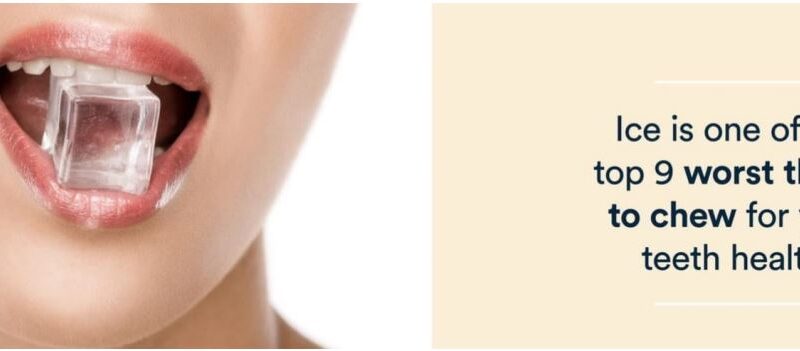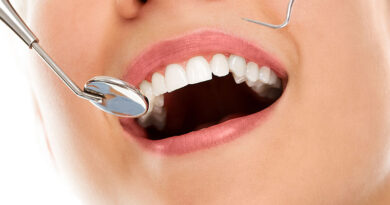Ice Chewing: Breaking Down the Myths and Unveiling the Risks
Let us understand the Teeth
Understanding the structure of teeth can provide valuable insights into their function and help you
appreciate the importance of dental care.
Enamel: The Protective Outer Layer
The enamel is the outermost layer of the tooth and plays a crucial role in safeguarding it against daily
wear and tear. It is the hardest substance in the human body and acts as a protective shield, shielding
the underlying layers from harmful bacteria and acid attacks. Although enamel is incredibly strong, it can
still be eroded by factors such as poor oral hygiene, acidic foods and drinks, and teeth grinding.
Pulp: The Vital Core
At the center of the tooth lies the pulp, a soft tissue that contains blood vessels, nerves, and connective
tissue. The pulp supplies nutrients to the tooth and is responsible for tooth sensation. When the enamel
and dentin are compromised, bacteria can reach the pulp, causing inflammation and severe toothaches.
Roots and Root Canals: Extending Below the Surface
Teeth are not just what you see above the gum line. Each tooth has roots that extend below the surface
into the jawbone. Inside the roots, there are root canals that contain blood vessels, nerves, and
connective tissue. Root canals play a vital role during tooth development, but they can also become a
source of infection if bacteria enter and cause inflammation.
Why Do People Chew on Ice?
Have you ever seen, someone enthusiastically crunching on ice cubes? Here’s why they do it:
- Cooling and Refreshing Sensation
One of the most straightforward reasons why people chew on ice is the cooling and refreshing sensation it provides. Chewing on ice can offer a temporary relief and a sense of refreshment, similar to drinking a cold beverage. - Habit and Oral Stimulation
For some individuals, chewing on ice becomes a habitual behavior. It may start innocently as a way to pass the time or alleviate boredom, and it can develop into a repetitive action that provides comfort or stress relief. Additionally, the act of chewing itself can provide oral stimulation, which some people find satisfying or comforting. - Iron Deficiency
In a lot of cases the cause can also be particularly iron deficiency anemia. Chewing ice may temporarily relieve some of the symptoms associated with iron deficiency, such as fatigue or a desire to eat non-nutritive substances.
What is the worst that can go wrong with chewing on ice?
Chewing on ice may seem harmless, but it can have significant consequences for your dental health. The cold, refreshing sensation that comes with crunching ice cubes can be tempting, but it’s important to understand the potential risks.
- Dental Fractures and Cracks:
One of the most serious risks of chewing ice is dental fractures and cracks. Ice cubes are hard and can exert excessive force on your teeth, especially if you bite down forcefully. This can lead to chips, fractures, or even complete breaks in your teeth, requiring extensive dental treatment.
- Tooth Sensitivity & Damaged tooth enamel:
Repeatedly subjecting your teeth to extreme cold temperatures by chewing ice can cause tooth sensitivity. The enamel, the protective outer layer of your teeth, can become worn down or damaged, exposing the underlying dentin. As a result, you may experience discomfort or pain when consuming hot/cold foods and drinks.
Chewing on ice gradually wears down the enamel, making teeth more susceptible to decay and cavities. Enamel erosion can also lead to a dull or discolored appearance, affecting the aesthetics of your smile.
- Irritated Gums and Soft Tissues:
The hard, jagged edges of ice cubes can irritate and injure your gums and other soft tissues in your mouth. This can lead to gum inflammation, soreness, and bleeding. Prolonged irritation may also increase the risk of developing gum disease, which can cause gum recession, tooth loss, and other oral health complications.
How to break the ice-chewing habits?
- Understand the Risks:
Educate yourself about the potential consequences, such as dental fractures, tooth sensitivity, and damaged enamel. Understanding the long-term impact on your dental health can provide motivation and reinforce your commitment to change.
- Find Alternatives:
Replacing the habit of chewing ice with healthier alternatives is crucial. For example, opt for chewing sugar-free gum, snacking on crunchy fruits and vegetables, or enjoying cold beverages without ice. By redirecting your focus, you can gradually replace the ice-chewing habit.
- Gradual Reduction:
Rome wasn’t conquered in a day. Breaking any habit takes time, and quitting ice-chewing is no different. Instead of trying to stop abruptly, consider a gradual reduction approach. Start by consciously limiting the number of ice cubes you chew each day. Slowly taper off until you no longer feel the need to chew ice.
- Seek Support:
Breaking a habit can be challenging, so don’t hesitate to seek support from friends, family, or a healthcare professional. Share your goal of quitting ice chewing with them, and ask for their encouragement and accountability. Consider joining support groups or online communities where individuals share similar experiences and provide guidance on overcoming habits.
- Professional Dental Help:
If you’re struggling to break the ice-chewing habit on your own, consult your dentist for assistance. They can provide personalized advice and guidance based on your specific dental health needs. Your dentist may also recommend treatments for any dental damage caused by the habit. At KB Dental Delhi we give you the care you deserve!
When to See a Dentist?
- Tooth Sensitivity:
Tooth sensitivity is one of the common signs that may indicate ice-related dental problems. Sensitivity to temperature changes is a warning sign that warrants a visit to your dentist.
- Tooth Fractures or Cracks:
If you notice any chips, fractures, or breaks in your teeth, it’s essential to see a dentist promptly. Fractured teeth not only cause pain but can also compromise the integrity of your tooth structure, making it more susceptible to decay and further damage.
- Worn or Damaged Tooth Enamel:
If you observe thinning enamel or notice changes in the appearance of your teeth, such as increased transparency or discoloration, it may indicate enamel erosion. Damaged tooth enamel leaves your teeth vulnerable to decay, cavities, and other dental issues.
- Gum Irritation or Inflammation:
The sharp edges of ice cubes can irritate and injure your gums, leading to gum inflammation and soreness. If you experience redness, swelling, bleeding gums, or persistent discomfort, it’s important to consult your dentist. Prolonged gum irritation can increase the risk of developing gum disease, which can lead to gum recession, tooth loss, and other oral health complications.
- Persistent Jaw Pain or Discomfort:
Chewing on ice can strain the jaw muscles and temporomandibular joint (TMJ), leading to jaw pain or discomfort. If you experience persistent jaw pain, difficulty opening or closing your mouth, or a clicking or popping sound when you move your jaw, it may indicate a TMJ disorder. Seeing a dentist can help determine the underlying cause and provide appropriate treatment.
Conclusion
Chewing on ice may seem harmless, but it can lead to tooth sensitivity, fractures or cracks, worn enamel, gum irritation, loose dental restorations, and persistent jaw pain. Ignoring these signs can result in further damage and complications. By seeking timely dental care, you can address these issues before they worsen and protect your teeth from long-term consequences.
Regular dental check-ups are essential for early detection and prevention of dental problems. Your dentist will be able to assess the condition of your teeth, identify any ice-related issues, and provide appropriate treatment. Remember, prevention is always better than cure. Avoiding the habit of chewing ice altogether is the best way to protect your dental health.




